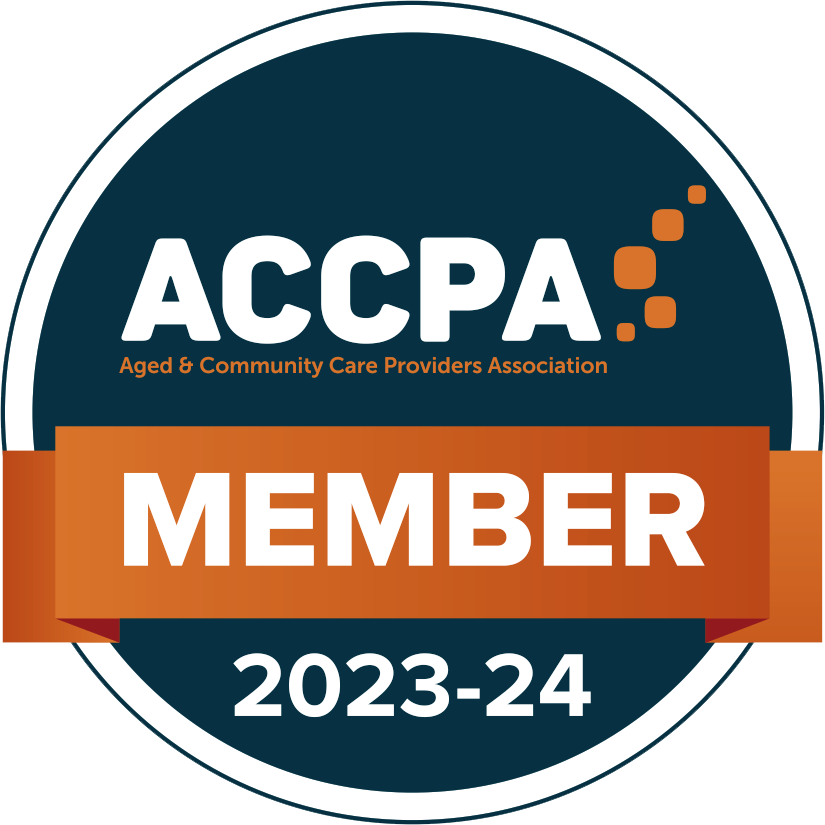Any Questions?
Understanding the Support at Home Program: Essential Insights for 2025
The Support at Home program, commencing on 1 July 2025, introduces a holistic approach to in-home aged care in Australia. Designed and implemented by the Australian Federal Government, this initiative reflects a commitment to ensuring older Australians can live safely and comfortably in their homes for as long as possible. The support at home program offers streamlined classifications, equitable pricing, and enhanced focus on personalised support, the new program aims to make aging at home safer and more dignified.
At the heart of these reforms is the Aged Care Act 1997, which provides the legal framework to ensure these changes are grounded in fairness, transparency, and sustainability. The new support at home program represents a key part of the government’s efforts to modernise aged care services in response to the Royal Commission into Aged Care Quality and Safety and the growing needs of an aging population.
Why Were the Support at Home Reforms Introduced?
The Support at Home program represents a transformative shift in the aged care sector, addressing significant challenges in the current aged care system while better aligning with the support needs of older Australians.
1. Increasing Demand for In-Home Care
Australia’s population is aging rapidly, and many older individuals seek to remain in their homes rather than move into residential care. By 2035, an estimated 1.4 million Australians will require in-home support.
Why In Home Aged Care This Matters:
- Most older Australians prefer to age in place, maintaining their independence and community ties.
- Home-based care is often more affordable and desirable than residential aged care.
- The current system lacks the flexibility to adapt to older Australian's diverse and evolving needs.
The Aged Care Act enables reforms like the Support at Home program to address these challenges by ensuring a person-centred, adaptable approach to in-home care delivery.
Three Key Changes Under the Support at Home Program
1. Tailored Aged Care Funding with New Classifications and Budgets
The Support at Home program introduces a more refined funding structure, with eight classification levels replacing the four levels under the previous Home Care Packages Program. This ensures that aged care and services align with individual needs, as determined through an aged care assessment.
Key Details:
- Annual Budgets: Funding ranges from $11,000 (Classification 1) to $78,000 (Classification 8), based on care requirements.
- Quarterly Allocation: Budgets are divided into quarterly amounts, giving participants the flexibility to manage their aged care support and services.
Classification Levels and Quarterly Budgets:
- Level 1: ~$3,000 per quarter (basic support for low care needs).
- Level 2: ~$4,500 per quarter.
- Level 3: ~$7,000 per quarter.
- Level 4: ~$10,500 per quarter.
- Level 5: ~$13,500 per quarter.
- Level 6: ~$16,500 per quarter.
- Level 7: ~$19,500 per quarter.
- Level 8: ~$22,500 per quarter (comprehensive support for high care needs).
Why This Matters:
- Expanding to eight classifications enables more precise aged care delivery.
- Participants can adjust aged care services within their allocated budget as needs evolve.
- Unspent funds, up to $1,000 or 10% of the quarterly budget, can roll over, ensuring value for participants.
2. Support for Home Modifications and Assistive Technology
The Assistive Technology and Home Modifications (AT-HM) Scheme is a cornerstone of the program, enabling faster and more affordable access to vital aids and home improvements.
Key Features:
- Funding Tiers: Participants can access up to $500 for minor modifications (e.g., grab rails) or $15,000 for extensive changes (e.g., stairlifts).
- A new Assistive Technology Loans Scheme provides quick access to items like wheelchairs or walkers, with a trial already underway in NSW.
- Funding covers allied health consultations to ensure assistive technology's safe and effective use
Why This Matters:
- Modifications like widened doorways and ramps reduce fall risks and promote independence.
- Assistive technology, such as fall detectors, enhances safety and mobility.
- Participants no longer need to save funds from their budgets for modifications or equipment.
3. Focus on Early Interventions and Short-Term Supports
The Support at Home program emphasises preventative care to maintain independence and reduce reliance on long-term services.
Key Features:
- Restorative Care Pathway: Up to 12 weeks of allied health services to help participants regain function after illness or injury.
- End-of-Life Pathway: Provides up to $25,000 in funding for participants with less than three months to live, enabling dignified care at home.
- Upfront Supports: Prioritises early interventions, such as allied health services, assistive technology, and home modifications.
Why This Matters:
- Early interventions help participants maintain physical and mental health, reducing hospitalisations.
- Short-term supports like restorative care focus on rebuilding strength and independence.
- End-of-life supports allow individuals to remain at home with comprehensive care during their final months.
What Happens to Existing Home Care Package Recipients?
For individuals with existing Home Care Packages (HCPs), the transition to the Support at Home program has been designed to ensure minimal disruption and continuity of care. Here’s how it affects them:
1. Seamless Transition to the New Program
- Participants receiving Home Care Packages will automatically transition to the Support at Home program on 1 July 2025.
- Their existing funding level will be aligned to one of the eight classifications under the new program, ensuring they continue to receive appropriate support.
2. Preservation of Existing Services
- Recipients will retain access to the same types of services they currently use, including personal care, domestic assistance, and nursing, but with added flexibility to adapt services as their needs evolve.
3. Unspent Funds Are Retained
- Any unspent funds from a participant’s Home Care Package will carry over into the Support at Home program, ensuring they can continue to use these funds for their care needs.
4. Budget Alignment
- Participants’ budgets will be adjusted to fit the new program’s quarterly structure, ensuring smoother fund management.
5. Greater Flexibility
- Under the Support at Home program, participants will have greater flexibility to adjust the mix of support services they receive within their allocated budget, empowering them to tailor their care to their changing needs.
6. Enhanced Focus on Preventative Care
- Existing recipients will gain access to features like Restorative Care Pathways, assistive technology, and home modifications, which may not have been readily available under HCPs.
7. No Worse Off Principle
- To protect current HCP recipients, the Australian Government has implemented a “no worse off” principle, ensuring that contributions under Support at Home will not exceed what they pay under the existing HCP structure.
Understanding Costs & Contributions
Will My Costs Change?
- Health-related costs (e.g., nursing and medical treatments) are fully funded.
- Caps on care management fees ensure fair pricing.
- Contributions are based on income levels, ensuring affordability.

Income-Based Contribution System:
| Income Bracket | Clinical Services (Nursing, Physiotherapy) | Independence Services (Personal Care, Transport) | Everyday Living Services (Cleaning, Gardening) |
|---|---|---|---|
| Full Pensioners (<$32,000 individual, <$50,000 couple) | Fully Funded ($0) | 5% of service cost (~$5+) | 17.5% of service cost (~$10-$25) |
| Part Pensioners ($32,001-$60,000 individual, $50,001-$90,000 couple) | Fully Funded ($0) | 5%-50% based on assessment | 17.5%-80% based on assessment |
| Self-Funded Retirees (>$60,001 individual, >$90,001 couple) | Fully Funded ($0) | 50%+ of service cost (~$50+) | 80%+ of service cost (~$100+) |
- Contributions are capped at $130,000 lifetime.
- The government reviews income brackets regularly.
Summary for Existing HCP Recipients
The transition to the Support at Home program has been carefully planned to protect the interests of existing Home Care Package recipients. They will experience:
- A smooth transfer to the new system.
- Preservation of existing services, with added flexibility.
- Retention of unspent funds.
- Access to new features like assistive technology and early intervention pathways.
This ensures that individuals can continue to receive the care they need without disruption while benefiting from the improvements and expanded new support options offered by the Support at Home program.
Transitioning from CHSP to Support at Home
Many Commonwealth Home Support Programme (CHSP) clients are transitioning to higher-level care as places in the Home Care Packages (HCP) program become available. To support this transition, the Australian Government has adopted a phased approach:
- Commonwealth Home Support Programme: The CHSP will remain standalone until 1 July 2027, giving clients and aged care providers time to adjust.
- Gradual Transition: Commonwealth Home Support Program clients with increasing care needs are gradually moving to HCPs, ensuring they receive the appropriate level of support before the full rollout of Support at Home.
- Seamless Integration: By 2027, Commonwealth Home Support Program services will merge into the unified Support at Home framework, streamlining aged care for all participants.
This phased approach ensures continuity of care and reflects the government’s commitment to providing older Australians with uninterrupted, high-quality services.

What’s in a Name? From Home Care Packages Program to Support at Home
The transition from Home Care Packages (HCP) to Support at Home isn’t just a name change—it reflects a fundamental shift in how aged care services are delivered.
Why the Name Change Matters:
- Holistic Focus: Support at Home encompasses a wider range of services and new support, including assistive technology, home modifications, and preventative care.
- Emphasis on Independence: The name highlights the program’s goal of helping older Australians remain independent and safe in their homes.
- Streamlined System: Unlike the Home Care Packages Program, Support at Home integrates multiple aged care services into a unified framework, making the system easier to navigate.
How Does the Support at Home Program Affect Providers?
1. Streamlined Service Delivery
- Providers will operate under a unified framework, replacing the fragmented system of multiple programs like the Home Care Packages Program (HCP) and the Commonwealth Home Support Programme (CHSP).
- This simplifies administrative processes, as providers will only need to comply with one set of guidelines and pricing structures.
2. Single Service Provider Per Participant
- Each Support at Home participant will have a single designated provider responsible for managing their services.
- Providers will take on a broader role, including coordinating care, arranging assistive technology, and overseeing home modifications.
3. Care Management Responsibilities
- Providers will receive 10% of each participant’s quarterly budget for care management services.
- This funding will cover planning, coordinating services, monitoring participants’ needs, and providing clinical advice.
4. Invoicing and Payment Reforms
- Providers must submit invoices to Services Australia detailing services delivered, hours or units of care, and associated costs.
- Payments will be tied directly to services rendered, ensuring transparency and accountability.
5. Increased Accountability
- The program’s focus on outcomes-based care means providers will need to demonstrate that their services meet participants’ goals and improve well-being.
- The Aged Care Quality and Safety Commission will closely monitor compliance with aged care quality standards and adherence to price caps.
6. Opportunities for Growth
- Expanded service categories like assistive technology, home modifications, and restorative care offer providers opportunities to diversify their offerings.
- The Assistive Technology and Home Modifications (AT-HM) Scheme enables providers to supply or coordinate vital aids and equipment for participants.
7. Support for Thin Markets
- Providers operating in rural, remote, or specialised markets can access thin market grants to help bridge financial gaps and ensure sustainability.
- This ensures services remain accessible to participants in underserved areas.
8. Phased Transition for CHSP Providers
- CHSP providers will continue to operate independently until 1 July 2027, giving them time to adapt to the Support at Home framework.
- The phased approach allows providers to transition gradually, minimising disruption to service delivery.
Summary for Providers
The Support at Home program represents both challenges and opportunities for providers:
- Challenges: Increased accountability, invoicing changes, and a broader scope of responsibilities may require operational adjustments.
- Opportunities: Diversification of services, streamlined processes, and potential funding for thin markets can help providers grow and innovate.
Ultimately, the program offers providers a chance to play a pivotal role in delivering high-quality, person-centred care to older Australians.
The Aged Care Act: The Backbone of Reform
The Aged Care Act 1997 underpins the Support at Home reforms, ensuring they are implemented effectively and fairly. It plays a critical role in the aged care sector by:
- Promoting Equity and Access: Enables price caps, lifetime contribution caps, and income-based participant tiers.
- Protecting Consumer Rights: Guarantees aged care participants the ability to make choices about their in home care.
- Encouraging Innovation: Allows new support and initiatives like the Assistive Technology Loans Scheme and preventive care pathways.
The Big Picture
The Support at Home program represents a new era in aged care, offering tailored funding for aged care recipients, access to assistive technology, and a focus on early intervention. Backed by the Aged Care Act, these reforms ensure that older Australians can age with dignity, independence, and control over their care.
For more information, visit the Department of Health and Aged Care website.
Ready to Navigate the Future of Aged Care with FOCUS Connect?
FOCUS Connect supports you through every stage of your care journey as a trusted Home Care Package provider (HCP) and Commonwealth Home Support Programme (CHSP) services. With the upcoming transition to the Support at Home program in 2025, we are committed to ensuring you continue to receive the high-quality, personalised care you deserve.
Why Choose FOCUS Connect?
- Expertise in delivering in-home aged care and tailored services under My Aged Care frameworks.
- Guidance and support through the transition to the Support at Home program.
- A trusted partner for navigating new funding and service options.
Take the Next Step
Let us help you prepare for the future of aged care. Whether you’re looking for in-home support today or planning for tomorrow, FOCUS Connect is here to ensure your care is seamless, flexible, and designed around your needs.

FOCUS Connect, a registered not-for-profit charity, provides practical assistance and support services to disadvantaged and marginalised individuals. As a My Aged Care provider, we offer Home Care Package and Commonwealth Home Support Programme services across South West and Northern Sydney. Additionally, we are a leading provider of community services to multicultural and culturally and linguistically diverse (CALD) populations across South West Sydney.
Need Support or Know Someone Who Does?
If you need support, call us at 02 4627 1188 or contact us via our online enquiry form, and we will get back to you shortly to discuss your needs and how we can assist you. If you know someone who could benefit from our services, refer them to FOCUS Connect to help them receive the support they need and deserve.









